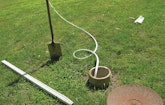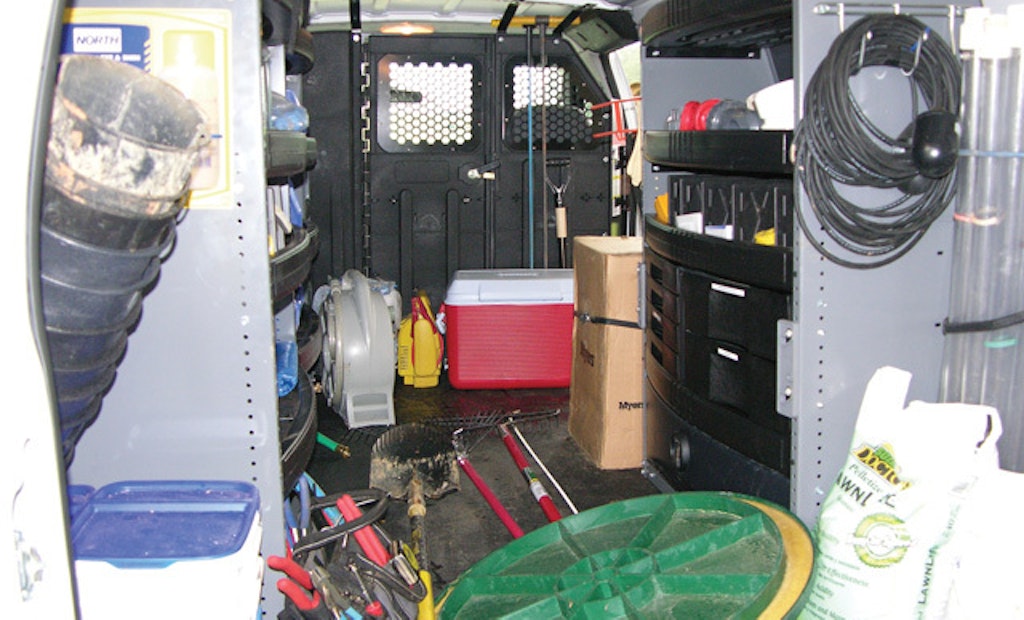Interested in Excavating?
Get Excavating articles, news and videos right in your inbox! Sign up now.
Excavating + Get AlertsThis month we take a detour from our journey through onsite wastewater treatment systems to address a topic that has been raised in letters to the editor and in online chat rooms: What is a hydraulic load test for time-of-sale system inspections?
There are two major reasons to conduct a hydraulic load test as a part of a point-of-sale real estate inspection. First is to determine whether the sewage effluent moves through the system as designed. Second is to determine if the final soil dispersal area will accept the effluent delivered to the area.
This test should not be confused with hydraulic tests or soil evaluations associated with determining the design soil-loading rate. Such tests are used with the estimated average daily sewage flow rate to determine the size of the soil treatment area. Here, the purpose is to inspect an existing system to determine whether all necessary components are present and are operating the way they should.
Some confusion
While experts largely recognize that some type of hydraulic test is necessary to document that a system is operating properly, there has been wide disagreement of how to conduct the test and how to interpret the information.
To a certain extent this confusion results from lack of agreement nationally about how effluent can be distributed to a series of gravity-fed treatment trenches. As anyone knows who has attended our educational seminars, we are strong proponents of sequential distribution using drop boxes versus distribution boxes.
Inspection ports at the ends of the trenches, whether using distribution boxes or drop boxes, allow easier and more accurate evaluation of how much of the system is being utilized under existing flow rates. That in turn makes it easier for the inspector to answer whether the water is moving in the system the way it should, and whether the soil is accepting the effluent.
There have been some efforts to provide a standardized hydraulic load test for point-of-sale inspections. Probably the most notable is a protocol provided by the National Sanitation Foundation (NSF). In addition, some states, such as Pennsylvania and Alaska, have established protocols to make this determination. Other states have chosen to not provide guidance other than to say the system needs to be evaluated.
Just add water?
The test itself involves introducing a specified volume of water downstream from the septic tank to the soil treatment unit. The evaluation includes observing whether water:
- Flows back into the tank
- Surfaces in the yard
- Is accepted by the soil
The first two findings clearly indicate problems with the system. The water is usually introduced using a hose from an outside sillcock connected to a water meter to determine the amount of water delivered at the outlet of the septic tank.
One major area of discussion and disagreement about the test is what volume of water should be added. As we travel around the country conducting inspection workshops, we hear a variety of opinions on this issue. Some suggest using the average daily flow. Others say to open up all the faucets in the house and let them run for an hour. Our all-time favorite is from Malibu, Calif.: “Use 2,000 gallons because when we party, we party in a big way!”
Basic steps
Leaving that issue aside for the moment, here are the general procedures to follow when conducting a hydraulic load test:
- Record any inspection port liquid levels, if any, in reference to the as-built drawings or site plan.
- Using a dedicated hose with backflow prevention, begin introducing water at the specified point downstream from the septic tank.
- Record the test start time.
- Monitor and record the liquid levels in the inspection ports every 30 minutes for two hours. If the liquid rises to the critical level (top of the media in all laterals or the bed) before the end of the two hours, stop adding water and return the following day.
- Assuming the liquid level did not rise above the critical level, turn off the water after the desired volume is delivered.
- If the system has a gravity soil treatment area, wait 30 minutes for stabilization. Then record and document the liquid levels in all inspection ports.
- Return in 24 hours and repeat the test, first recording the liquid levels in the inspection ports.
- Walk the entire soil treatment area and surrounding areas to verify that no adverse conditions have resulted from the test (such as surfacing effluent, saturated soils, or downslope breakouts).
- Clean and sanitize all test equipment before returning it to your service vehicle.
- Secure all inspection port covers, cleanout caps, and any other system access points that were opened for the test.
- Clean any residuals that might contaminate the surrounding area of the system site.
- Document all findings and test results into a formal report for filing with the appropriate permitting authority.
What about volume?
In inspection workshops we have conducted for the National Association of Wastewater Transporters we have suggested introducing 100 gallons of water, or the equivalent of about two consecutive loads of laundry. Our reason is that 100 gallons should be adequate to determine whether the system will back up into the septic tank, and a system should be expected to accept the equivalent of the water from two loads of laundry to be considered operating properly.
However, some states have different requirements, and some recommend the use of the NSF standard: introducing the estimated average daily sewage flow. So we have consistently heard that there is a need for a more standardized approach.
There are also some interpretation issues with the level of effluent ponded in trenches during system operation. If sequential distribution is used, it is not uncommon to have effluent ponded to the tops of the trenches in parts of the system. Some jurisdictions view any level of ponding as indicating failure. This is not the case, but it is a required interpretation in some states and counties.
For these reasons and others, a subcommittee of the NAWT education committee has been drafting a standard operating procedure to be used with the NAWT inspection education program. The procedure has used the NSF standard, the Pennsylvania Septage Management Association (PSMA), and a standard from Alaska as a basis.
The intent is to publish this procedure in a variety of places and have it available on the NAWT website for review and comment. After comments are received and addressed, it will be presented as a procedure that can be adopted as a standard. We will keep you up to date with the status of this effort.








